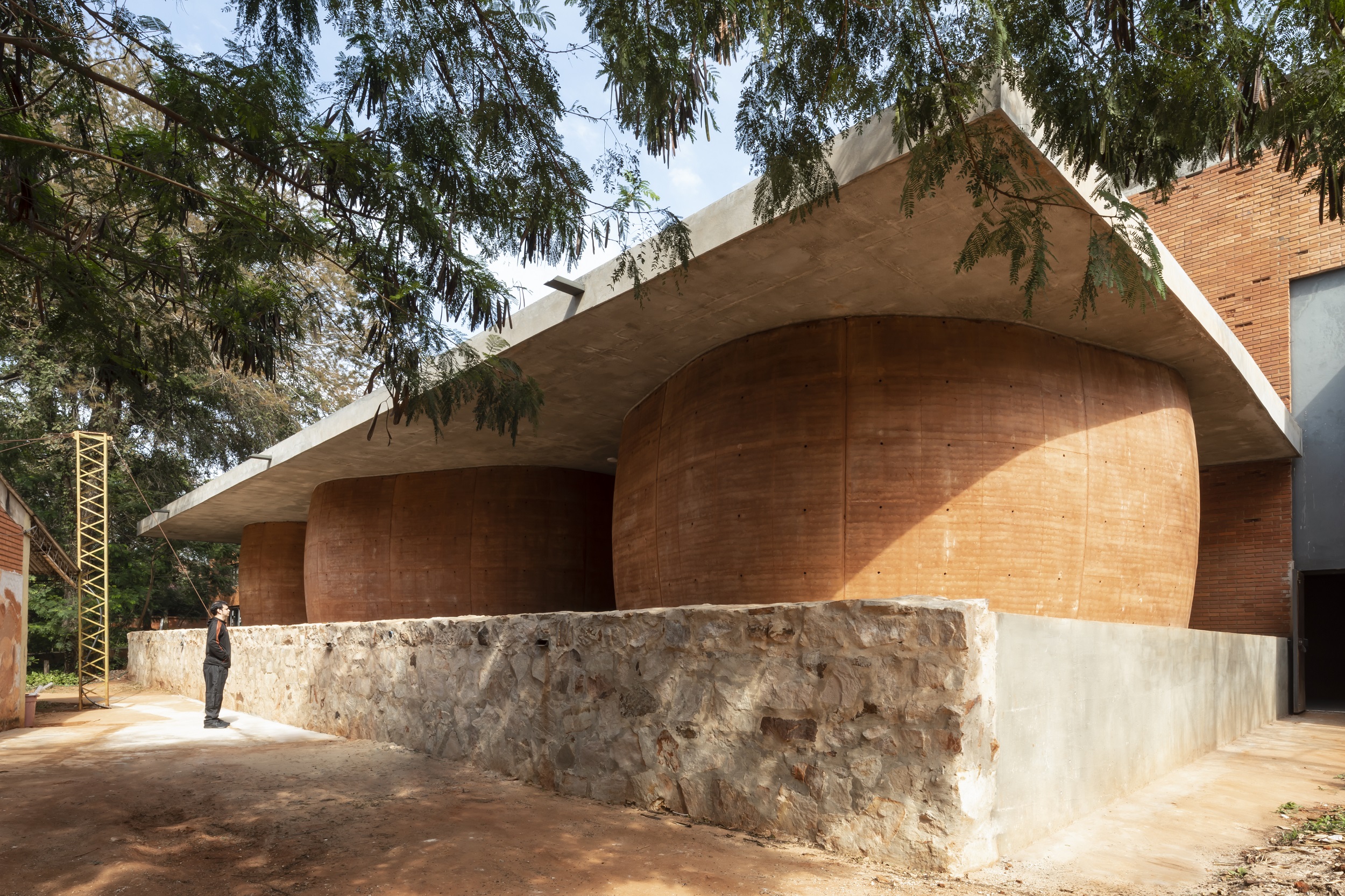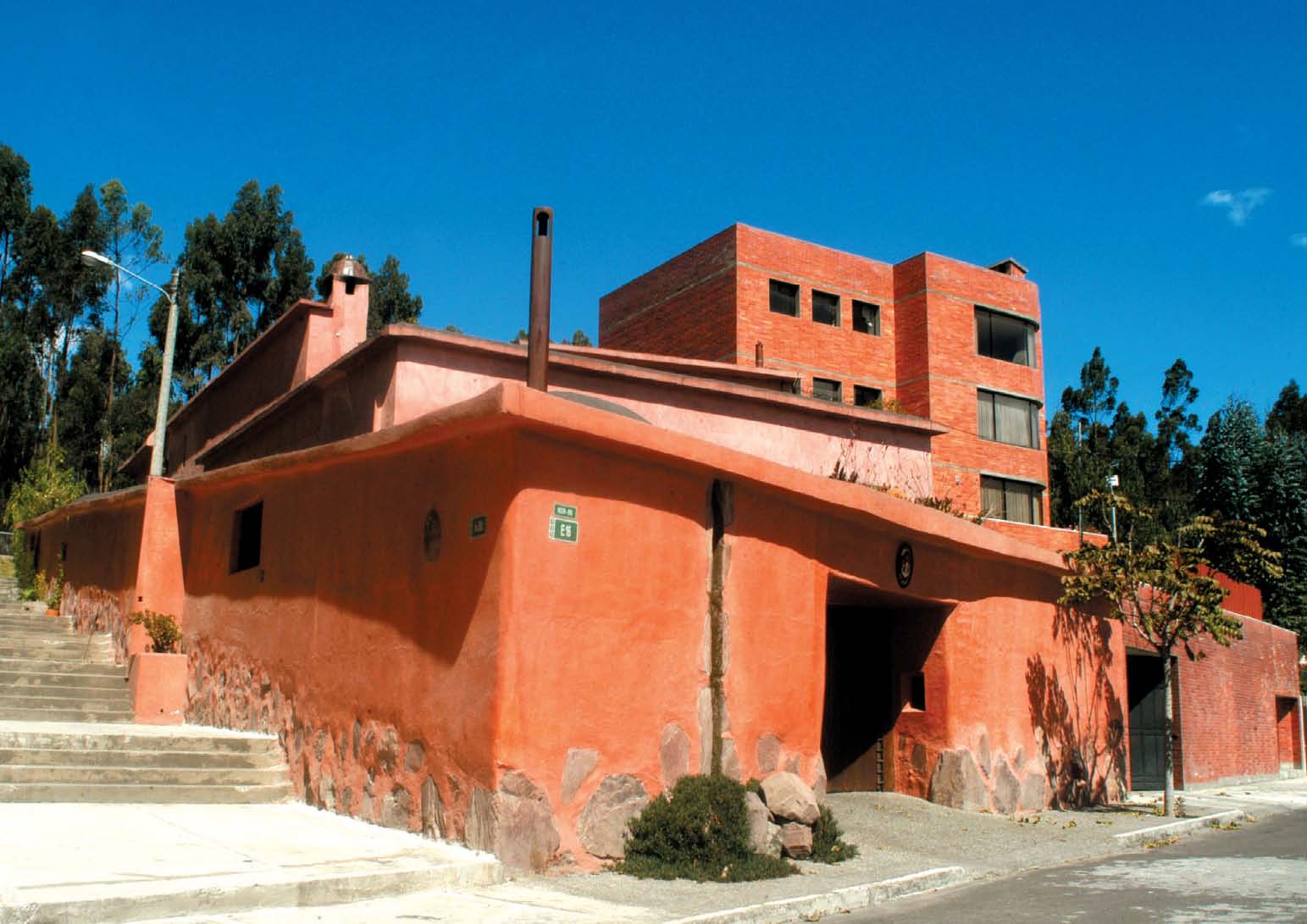Ariadna Cantis: How is the architecture program at FAUUSP organized?
Teaching Architecture Today Requires a More Integrated Idea of Architecture and Action in the City
Guilherme Wisnik is a renowned Brazilian architect, architectural critic, writer and professor. He is known for his work at the intersection of architecture, urbanism, and culture, as well as for his academic work, critical writings, and contributions to cultural and artistic debate. Wisnik has been a professor at the Faculty of Architecture and Urbanism at the University of São Paulo (FAUUSP) and is the author of numerous books and articles on architecture and urbanism in Brazil. In addition to his academic and professional work, Wisnik is known for his cultural activism and involvement in the Brazilian art scene. He has curated exhibitions and collaborated with artists and musicians on interdisciplinary projects.
Guilherme Wisnik: The School of Architecture and Urbanism at USP, the public university of São Paulo, is the largest and most important in Brazil, perhaps in South America or Latin America. In our faculty, architecture and urbanism are disciplines that go together; for us it is very important that architecture has an urban role.
We have a historic building, a project by Vilanova Artigas, from the 1960s, a symbol of the architectural brutalism of the Escola Paulista. Some time ago, the building was in a very bad state of maintenance, with economic problems and the need for computer equipment for students, and especially the urgency of creating good facilities for archiving projects. The families of the architects donated their archives to FAUUSP, which is the institution that stores the material. And by the way, it is one of the most important series of architectural projects in Brazil, which means that the archives are in the hands of the university. A lot of postgraduate research is being done along with the archives, but there is little space to store them, and the designs have hardly been digitized yet.

What is your background in curating and architectural criticism?
I studied at FAUUSP in the 1990s and was a student of Paulo Mendes da Rocha. At the undergraduate level, I was involved in initiation research. It was sociological research on the architectural profession and its social representation. I worked with Mendes da Rocha in his office and especially on the exhibition project for the 23rd edition of the São Paulo Biennial in 1996. At that time, I participated in the architectural project of the exhibition, but I got to know the curators, the artists, and I began to relate to that world. A few years later, the curator of the Bienal, Nelson Aguilar, invited me to collaborate with him in the preparation of the exhibition Brasil 500 años in 2000.
In 2001, I began writing articles for Folha de São Paulo, published a book on the architect Lucio Costa, and began my training as a critic and researcher of architectural theory. Gradually, I left the practice of design and project. For this reason, I maintain a vision of architectural history and theory that is very much based on the idea that the theorist Rosalind Krauss wrote about the expanded field or the expanded field of sculpture (and the arts).
I think in the expanded field of architecture and the arts in general, I am interested in thinking about architecture in direct relation to the visual arts and as a cultural phenomenon that has issues in common with music, with theater... This is transferred to my role as a teacher, because what I bring to my classes are views on modern or contemporary production, always crossing disciplinary fields and building bridges.
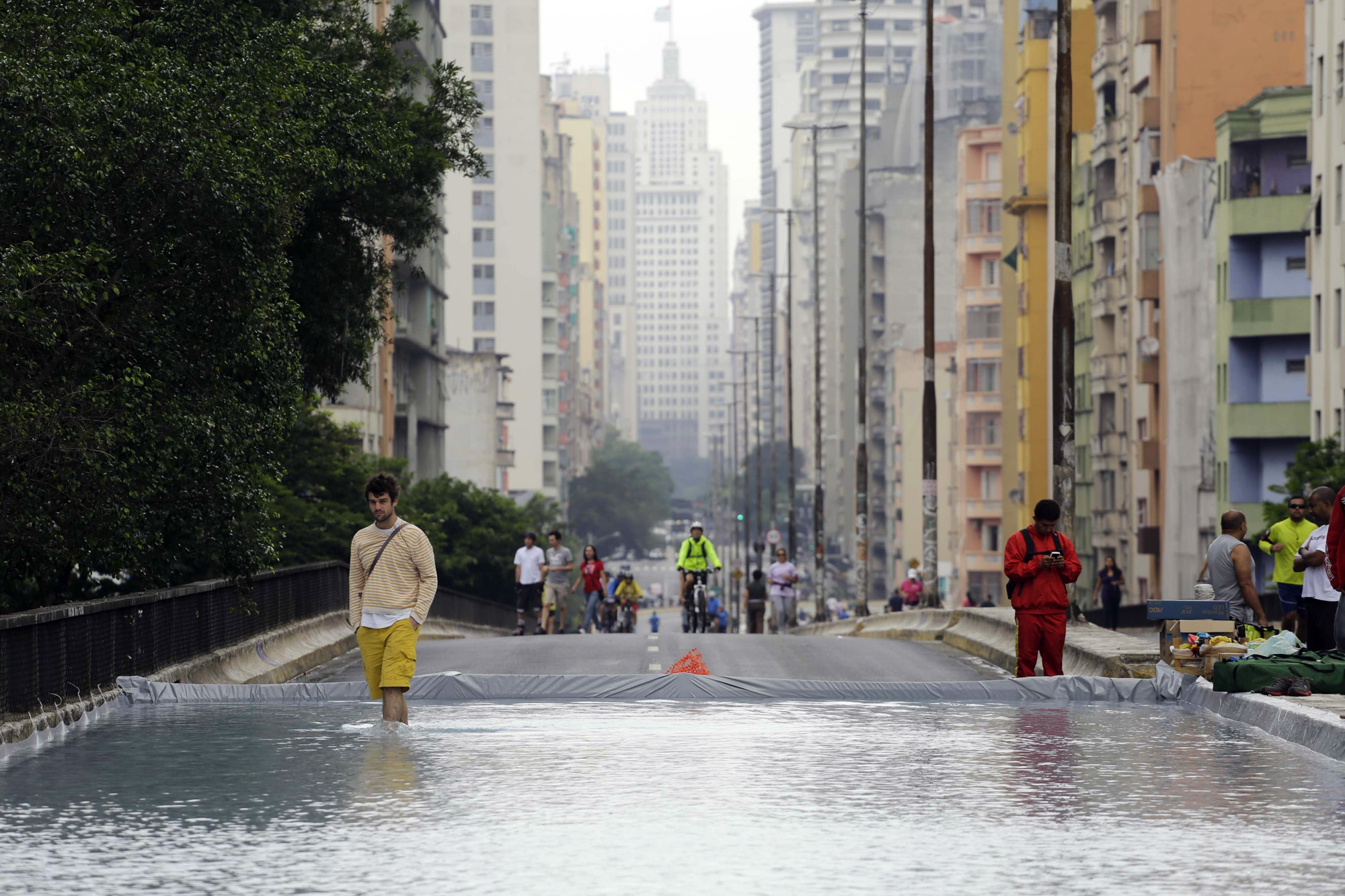
Since my participation as a newspaper critic, I began to define myself as an architecture critic, but always thinking about architecture in its role in Brazilian culture. From Lucio Costa, to Lina Bo Bardi, to Paulo Mendes da Rocha himself, with whom I worked, to his relationships with visual artists such as Hélio Oiticica, to Bossa Nova in music, to my free teaching thesis entitled "Brazil condemned to modernism: from state developmentalism to the countercultural avant-garde" [Brazil Condemned to Modernism: From State Developmentalism to the Countercultural Avant-garde], which is an attempt to think modernism and the contemporary in Brazil in its various cultural areas, all interconnected.
My courses in the faculty are always like this, they have to do with cultural studies, with cultural history, with the French influence in Brazil, which thinks about the foundations of our society, the effects of colonization and the paradoxes of modernity.
What will be the contribution of the new pedagogical project you are developing?
In relation to the faculty's pedagogical project, we are working on a new PPP: Pedagogical Political Project, which will change things and disciplinary contents. It has not changed for a long time. For 10 years we have had different students coming with the affirmative action policy. And the changes in society that have to do with the information society, everything that has appeared in the pandemic, the increasing willingness of students to do research at the undergraduate level. And they don't have the time, because the FAUUSP course takes all the time during five years, both in the morning and in the afternoon. So in the new PPP, I think it is necessary to find points of repetition among the many disciplines of the course to bring them together and do some disciplinary work together. This would free up some time for the students so that they would have the opportunity to work and do research and other extension activities that are not just disciplinary work of the faculty.
Tell us about the Villa Tugendhat exhibition at the Salón Caramelo of FAUUSP.
The faculty was arranged by the Consulate of the Czech Republic in São Paulo to host a traveling exhibition about Mies van der Rohe's Villa Tugendhat in Brno. The traveling exhibition they had was an exhibition of printed papers, with many plates with drawings and texts. It seemed to me insufficient for a good exhibition to occupy the Salón Caramelo, which is the heart of the faculty, the central space, with a great height.
In order to adapt the exhibition to the space, I invited a group of students from the History of Architecture course at the time, in 2022, and together we did a kind of curatorial and expo-graphic workshop linked to university teaching. The result was that the students built a model, a physical model of the house, to show together with the graphic panels. Then I realized two things: one, I knew that the plan of this house had a very long influence on Brazilian architecture, because Oscar Niemeyer and Paulo Mendes da Rocha built houses with similar characteristics. In particular, Mies's house is the first in which he builds a curved wall for the dining room, creating a curved but open space. Paulo and Niemeyer later did many things like that.
I wanted to show the influence on Brazilian architecture in the exhibition, so the students also built physical models of some of Paulo and Niemeyer's works. Finally, we realized that the floor plan of the Villa Tugendhat was exactly the size of the Caramelo Room (the house is very large). Then we drew the floor plan of the house on the floor, like in the film Dogville by Lars von Trier. A Brechtian contribution on the faculty floor. It was very nice to see the traces of Mies's house in the Artigas faculty building, with its dimensions, with the curved wall. Since we have Barcelona chairs in the administration room, we placed them in the corresponding spaces in the house. This room is seen from all the faculties, from very high up.
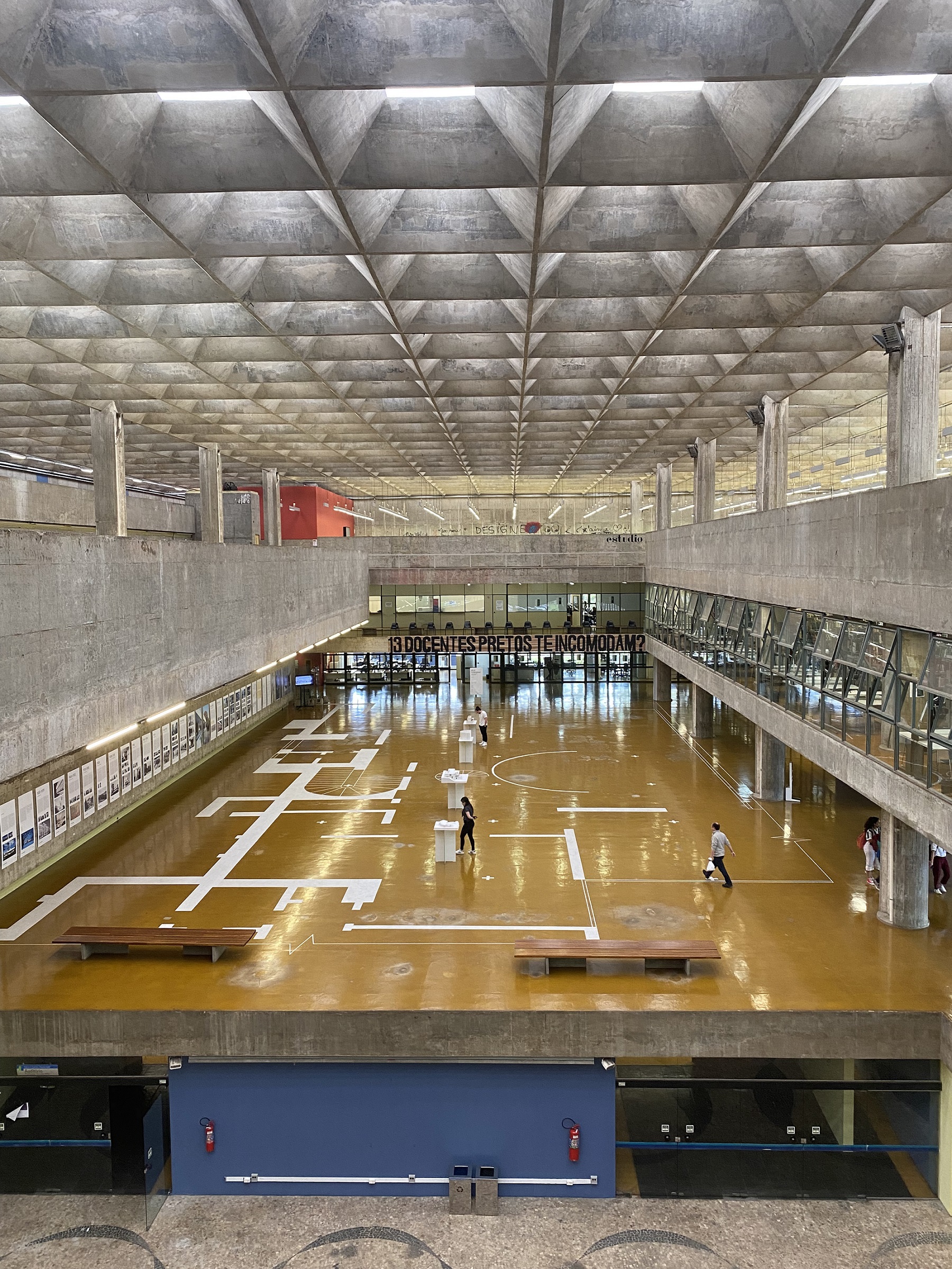

What does it mean to teach architecture today?
Architecture is a profession and a way of knowing that has changed a lot in recent years. In the 21st century, we are experiencing important technological changes, the growth of an information society that is greatly changing the relationships between people, which has put the idea of tectonics, which is the basis of architecture, in crisis.
We have had a very serious pandemic of COVID-19, which has strongly affected cities, relationships, public and collective space, and private spaces, due to the need for isolation. Architecture is a way of knowing that is in a moment of very strong change. But perhaps what is most striking to me in this sense is what happened after the financial crisis of 2008. And this is very clear in Latin America, but it also seems to me to be the case in Spain and Portugal: there has been an attempt by young people, even after they have been trained as architects and urban planners, not to have as their main objective the consolidation of their offices, their project offices, as liberal professionals, individual authors, waiting for work. On the contrary, they try to work in associations, in collectives, in hybrid groups of architects, urban planners, with artists, with geographers and very involved in social problems, in urban issues, creating their work in a more direct relationship with society and in a horizontal way.
Therefore, teaching architecture today is not so much teaching how to build buildings, the very desirable and complicated ways of building, but collective practices, modes, processes of production and collaboration, which are much more important as a professional horizon for young people, and it also has a lot to do with the rights of citizenship and public space, which have grown especially in Latin America, where there is not a strong tradition of public space, because these are countries that were colonies, that had slavery. Now there is always a struggle, a force, a very strong attempt to develop the dimension of the public, which is new for us.
How do you teach in a huge school in the 21st century?
In our school we have 150 new students every year in architecture and urbanism, plus 50 in the design course, which is at night. In the teaching of architectural projects, there must be a division of students by groups of professors and there must be a closer relationship. In the history and theory classes, where I am, they are more lecture-like, so you can have classes for many students at the same time, but we try to reserve a part of the class at the end for student seminars, where you can find ways to create a closer relationship.
At USP in general, and at FAUUSP, there is a great effort to seek transdisciplinarity or interdisciplinarity, which means breaking down barriers, disciplinary boundaries, even in teaching, to give students a more integrated idea of what architecture and actions in the city are. This is a way of teaching in a large school in the 21st century, looking for a non-compartmentalized teaching, not closed by specific knowledge, but always looking for connections. In São Paulo, architecture comes from engineering, from polytechnics, from techniques, from technology. Therefore, in São Paulo we have an architecture that has a lot to do with structure, with materials, with exposed concrete, a form of the building that is the form of the structure.
Paulo Mendes da Rocha liked to say that the FAUUSP is the meeting of the Polytechnic School of Engineering with the Faculty of Philosophy, that is, humanities and techniques thought together in a school based on project studios, on ateliers, which are collective spaces where new ideas can be tested, from urban planning to landscaping to the building, all in an integrated way.
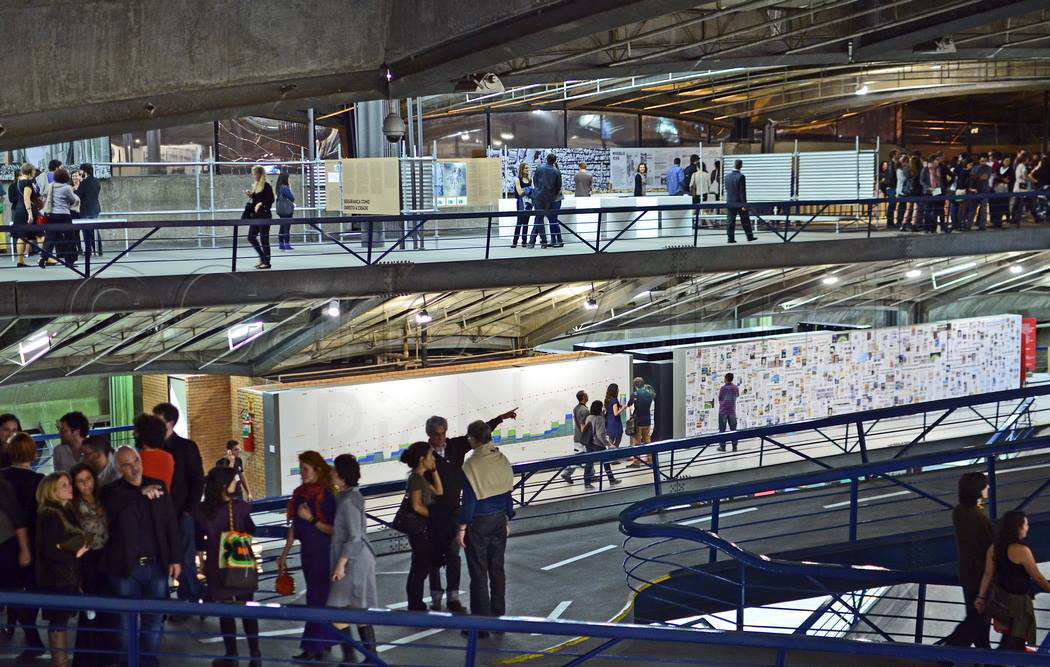


What are the challenges that need to be included in the contemporary agenda of the academy and how to do it?
It's important to say that in Brazil, for about 10 years, we have had a very strong change in the academy, in public schools, in universities, which are affirmative action policies. In the beginning we used to say "quotas", racial quotas, that is, we have specific places that are retributions, historical reparations for the great social and racial injustices that existed in our country. And then, more than just social, they are also racial, which has made the presence of indigenous and black people in the public university increase a lot. This has changed a lot, by the way, the discussions, the backgrounds of the people who come, their goals, the credentials they have, the number of cars in the parking lot in front of the faculty, which has decreased recently...
In fact, we are currently working on a project to reduce the number of parking spaces for cars and to turn part of the parking lot into a green area. All this has created the need to review the programmatic content of the courses. For example, speaking as I do from the Department of History and Theory, the history of architecture, the history of art, can no longer be a European or Eurocentric history as it was a long time ago. It has to be a different way of thinking about cultural contributions, mixtures, heritages, where they come from, how they are mixed, what are the roots, the multiple roots of cultures. And this is new, because the contribution, the social concern, was already a long time ago an important concern in the courses of the faculty, but not with this historical awareness. Because it is important to say that in Brazil, even for modern progressive thinkers, we always have the idea that we are starting from zero.
That is why Mario Pedrosa, who is a very important critic of art and architecture in Brazil, created an expression that is very well known here, which is that here in Brazil we are always "condemned to modernity": because we are new, we are a new culture, we are always starting from scratch. And that was a way of thinking about the strength of modernism in Brazil, and a bit in contrast to other countries like Mexico or Peru, where there was a presence of very strong indigenous cultures. Here - it was said - we had nomadic natives, a non-urban culture, without monuments, that had not left much behind. And so this myth of the new people, of an ever-new society, was created. And that is why the teaching here has always been European and modernist. But the new theories and the new consciousness are forcing us to think in a different way, the influence of the African peoples, the indigenous peoples, our ancestors as well. And this is a great challenge for the university and for the way of thinking about history, which has a very strong impact on architecture, because we have almost no reference in architecture that comes from indigenous peoples or Africans. The exhibition in the Brazilian pavilion at the last Venice Biennale, which won the Golden Lion and was curated by Gabriela Matos and Paulo Tavares, provides elements for thinking about this.

